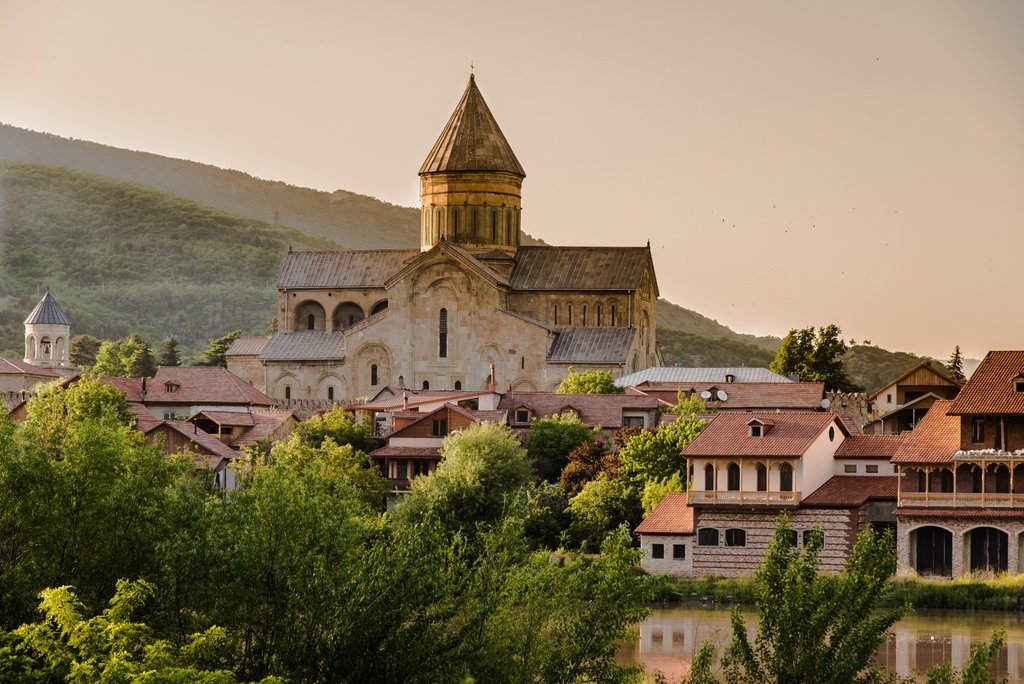 (dancearttbilisi.ge) The idea to organize the festival in Tbilisi and build an artistic platform to contribute to the development of modern dance and experimental arts emerged
in 2012. The festival is initiated and organized by the Swiss Agency
for Development and Cooperation and “Platform for Changes”, a Georgian
non-profit organisation, which intends to strengthen the role of arts as
a significant factor for social changes in the South Caucasus, to
foster the dialogue and interaction between artists internationally by
broadening the discourse about innovative arts and diverse presenting
forms.
(dancearttbilisi.ge) The idea to organize the festival in Tbilisi and build an artistic platform to contribute to the development of modern dance and experimental arts emerged
in 2012. The festival is initiated and organized by the Swiss Agency
for Development and Cooperation and “Platform for Changes”, a Georgian
non-profit organisation, which intends to strengthen the role of arts as
a significant factor for social changes in the South Caucasus, to
foster the dialogue and interaction between artists internationally by
broadening the discourse about innovative arts and diverse presenting
forms.
 The festival is funded by the Swiss Agency for Development and Cooperation and Tbilisi City Hall, the Europe House is the festival partner.
The festival is funded by the Swiss Agency for Development and Cooperation and Tbilisi City Hall, the Europe House is the festival partner.
There are two main directions within the festival: modern dance and experimental art. The first festival spans an eighteen months period. It will open
with a program in modern dance and experimental art from the 2nd to the 9th of June. Among the participants are Georgian, Armenian, Azerbaijani, Russian, Swiss, French, Austrian and Croatian dancers, choreographers, and organizers of different modern dance festivals. In the same period a three-day festival of street-art will take place. During this festival, graffiti creators from Georgia, Armenia and Azerbaijan together with a Belgian street artist of Georgian origin, Zuka Mikaberidze, will apply graffiti to the walls of the newly opened underground crossing near the former Hippodrome.
The next event will be a conference in
September 2013 held in honor of famous Georgian balletmeister and choreographer, Giorgi Alexidze, followed by different exhibitions of experimental art from the 1st to the 14th of December 2013. From the 24th to the 28th of February 2014, the festival will host screenings of documentaries about South Caucasian ballet traditions, thus honoring classical ballet as the foundation of modern dance.
The festival is initiated and organized by the Swiss Agency for
Development and Cooperation and “Platform for Changes”, also funded by Tbilisi City Hall, Pro Helvetia and Austrian Embassy in Baku. Festival Sponsor: Don Giuseppe - Italian Restaurant. Festival partners: Europe House and Authorized School Nr. 6
Website: dancearttbilisi.ge
facebook: facebook.com/South-Caucasus-Contemporary-Dance-Experimental-Art-Festival-in-Tbilisi
 Program :
2nd of June, 20. 00 - Royal District Theater.
Performances by Armenian, Azerbaijani and Georgian choreographers
(Performance by Rima Pipoyan on Variations on Dante’s “New Life”,
performance by Sabina Shiklinskaia and Samaraweerová and Kerner (www.karner-samara.artfolder.net), and performance by Mariam Alexidze V & V)
Program :
2nd of June, 20. 00 - Royal District Theater.
Performances by Armenian, Azerbaijani and Georgian choreographers
(Performance by Rima Pipoyan on Variations on Dante’s “New Life”,
performance by Sabina Shiklinskaia and Samaraweerová and Kerner (www.karner-samara.artfolder.net), and performance by Mariam Alexidze V & V)
2nd of June, 22. 00 - Royal District Theater. Nino Jvania plays John Cage, Luciano Berio, Karlhainz Stockhausen, Maka Virsaladze and Eka Chabashvili
3rd of June, 18. 00, Europe House – Debates about perspectives for development of modern dance and performance art in countries with strong ballet traditions. Disscussants are Zvonimir Dobrovic of international curator Perforacije Festival and Queer New York and Tokio, Georgian choreograph Mariam Alexidze, journalist David Bukhrikidze and representatives of Ministry of Culture from Azerbaijan and Armenia.
3rd of June, 20. 00, Vera Park – Open-Air Performance by Lela Chincharauli
3-4 of June, former Hippodrome – Graffiti Festival
4th of June, 12. 00 Chabukiani State Choreographic School, Masterclass in performance technique by Tatjana Fateeva (www.tsekh.ru), for students and amateurs.
5th of June, 15. 00, Europe House – Artists and
Grafiiti creators meet the artist Zuka Mikaberidze; screening of a
documentary about graffiti history
9th June, 12. 00, Chabukiani State Choreographic School, Masterclass in performance technique by Tatjana Fateeva (www.tsekh.ru), for dancers of State Opera and Ballet
9th June, 15. 00, master class by Aaron Charles in house dance.
9th June, 20. 00, Royal District Theater - A performance of "Spider Galaxies" by Cie Gilles Jobin (Switzerland)
+++
Catherine Vasenina about the importance of the festival
Festival - the best format for the re-imagining of any genre.
Festival - a meeting place, an exchange of information, a place to find dates, find inspiration, and share mutual learning. Contemporary dance - a very open, very liberal, multi-genre, and yet specific art. The cocktail of choreographic language presented at this festival has been influenced by so many factors. First of all, the willingness of a society to grasp the meaning
and importance of an experiment like this, and to support it. This stimulates creative choreographers; it encourages them to find ways to develop the traditions of a local culture with an eye to the current social atmosphere.
This initiative, Tbilisi's festival, is particularly valuable due to the incredibly interesting and rich traditional culture of Armenia, Azerbaijan and Georgia, the three countries of the South caucasus. These are traditions which are too often omitted from the world of modern dance, leaving them as a rich, untapped well of inspiration and new takes on authentic material. By
making contact with the traditional culture of modern dance the Caucasus has a better chance of finding itself, of discovering how to represent itself in the world of contemporary dance. And this festival is the perfect chance!
My best congratulations on the timely and very important organization of this festival!
Catherine Vasenina, dance writer for
"Ballet" magazine (Moscow), author of "The Russian contemporary dance.
Dialogues "(Moscow, 2005), and "Contemporary dance of post-SovietSpace"
(Moscow, 2013).






















